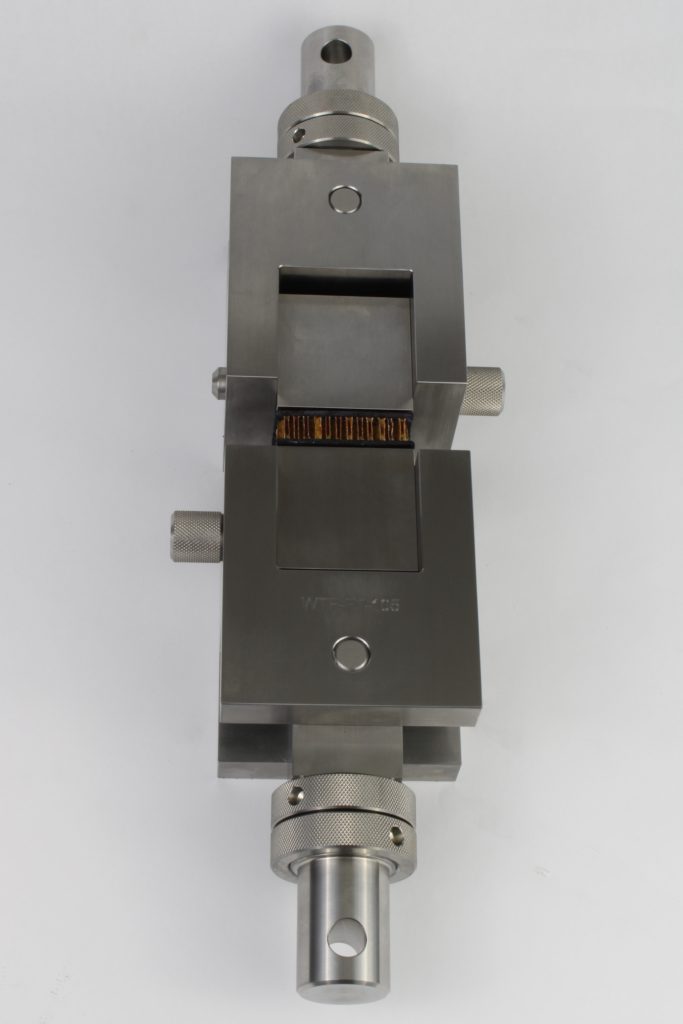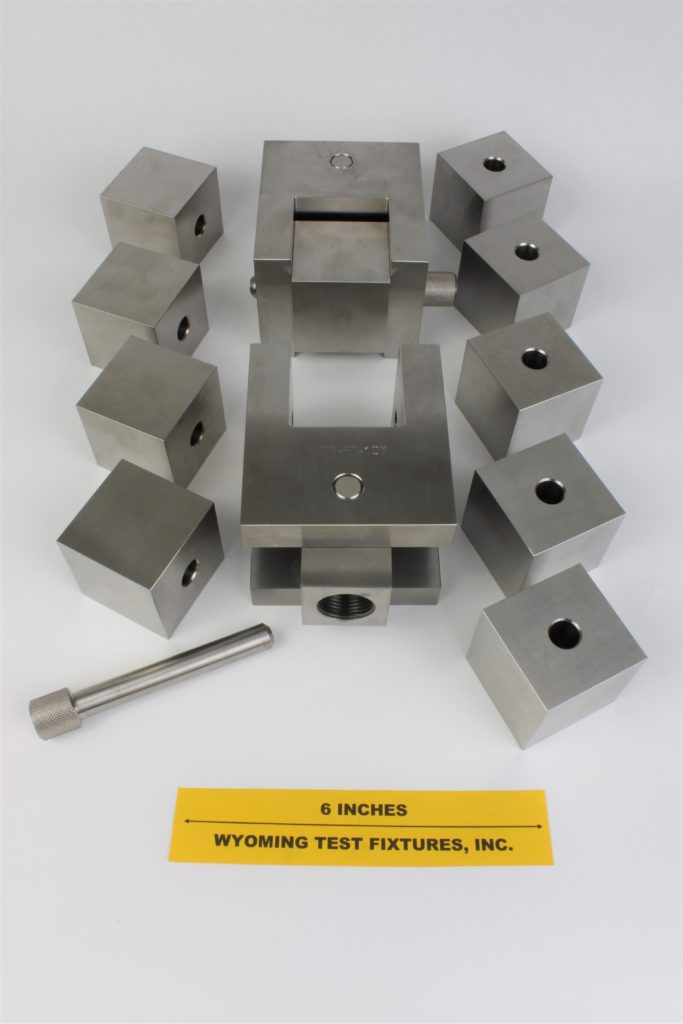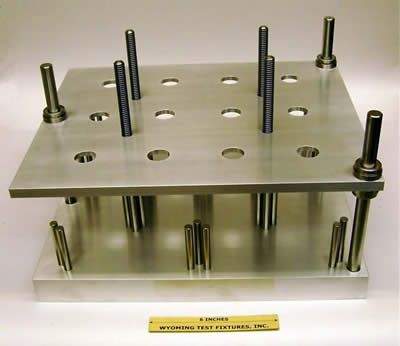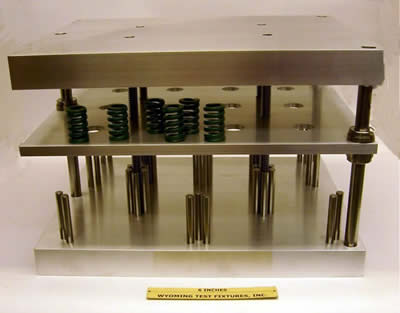Sandwich Panel Flatwise Tensile Test 2" Blocks (ASTM C297)
Model No. WTF-FT (Stainless Steel)
This test method, as indicated in Fig. 1, performs a through-the-thickness (flatwise) tensile test of a sandwich panel. The strength of the core, a face sheet, or the bond between the core and a face sheet, whichever is weaker, is determined.

Fig. 1: Assembled fixture with specimen installed (shown with optional adapters).

Fig. 2: Fixture with a 2" cube bonding block shown mounted in the upper holder.
The fixture consists of upper and lower bonding block holders, each with pivoted ends. The end fittings are standard Instron Type Dm connections (1.25" diameter male studs with 0.50" diameter cross-pin holes), for attachment to the testing machine. Optional mating adapters, if required, can be provided at nominal cost.
The cube-shaped bonding blocks also pivot in the holders, about slip-fit mounting pins, thus providing the desired second degree of alignment rotation at each end. This unique Wyoming design permits the use of all four faces of each bonding block, rather than just two as in other configurations, thus effectively doubling the useful life of each bonding block.
This standard Wyoming test fixture utilizes 2" cube bonding blocks, as recommended by ASTM Standard C297. However, the fixture will also accommodate smaller size blocks, which can be supplied upon request. Also, cylindrical blocks up to 2" in diameter can also be used.
Since the ASTM standard recommends that not less than five specimens be used for acceptance testing, five pairs of 2" steel bonding blocks are normally supplied with each specimen. Any number of additional blocks, and of alternate materials if desired, e.g., aluminum, can be supplied.
An alternate fixture design, utilizing 1" cube bonding blocks, is also available from Wyoming Test Fixtures, Inc., as Model WTF-FP. This fixture also conforms to the same ASTM Standard C297.
Bonding fixtures can also be supplied, to hold the specimen and blocks in alignment while each test specimen is being bonded to each pair of blocks.
An example of one type of bonding fixture design is shown in the two views of Fig. 3. It can accommodate up to twelve specimens. Each specimen assembly consisting of a specimen and adhesive between bonding blocks is held in alignment by the guide rods shown in the base plate while resting on the base of the fixture. The middle plate, which contains cavities in its underside, is then lowered onto the tops of the specimen assemblies, and an individual spring is placed in each hole of the middle plate, in contact with the top bonding block of each assembly. The top plate, shown in Fig. 3b, is then added to compress the individual springs when nuts on the four threaded rods are tightened. By using springs, each specimen assembly is subjected to the same force during the curing of the adhesive.


Fig. 3: An example of one type of bonding fixture
Source of Additional Information:
1) ASTM Standard C 297-10 (2010), "Tensile Strength of Flat Sandwich Constructions in Flatwise Plane," American Society for Testing and Materials, West Conshohocken, Pennsylvania (first issued in 1952).

